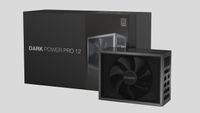

As in any PC component hierarchy, this tier is reserved for what could be called the enthusiast class. Here’s a good video explaining the difference between them. In other words, don’t focus too much on this split of categories.


There are rare cases where multi-rail PSUs can be useful, but only for PSU/PC enthusiasts. Single-rail (S– Tier, A-Tier, B-Tier) PSUs are built to provide the best possible protection. Even the difference in protection is minimal. Keep in mind that these OCP circuits have no impact on performance. Power supplies with multiple OCP circuits are called multi-rail while those with one OCP circuit are called single-rail. The difference between these two categories is in the number of overcurrent protection circuits. We have also divided the PSUs in each tier into two categories: multi-rail and single-rail To avoid clutter, we’ve chosen to showcase a maximum of 2 models per manufacturer in each tier.

There are six different certificates that signify a PSU’s efficiency and their names are pretty self-explanatory: Regular, Bronze, Silver, Gold, Platinum and Titanium.Īlongside each tier in the PSU hierarchy, there are explanations and suggestions for the best uses of the PSUs in that tier. This is a certification created to clearly indicate that a power supply is at least 80% efficient at 20%, 50% and 100% loads. In particular, we’re talking about PSU efficiency and the 80 Plus rating. There are other important traits that we didn’t use as deciding factors but are still worth mentioning and explaining. This hierarchy is arranged based on performance and efficiency. Related: How To Buy The Right Graphics Card With this in mind, we have created a definitive PSU hierarchy to help you make the right choice. It’s already a complicated process to try and match various PC components into a cohesive unit, especially when considering the vast amount of GPU options. There is no point in having a high-performance CPU or GPU if you saddle it with a lesser PSU. Whether you are building a new PC or upgrading your existing one, it’s important to have a good power supply unit, as they are the direct source of energy for your computer.


 0 kommentar(er)
0 kommentar(er)
